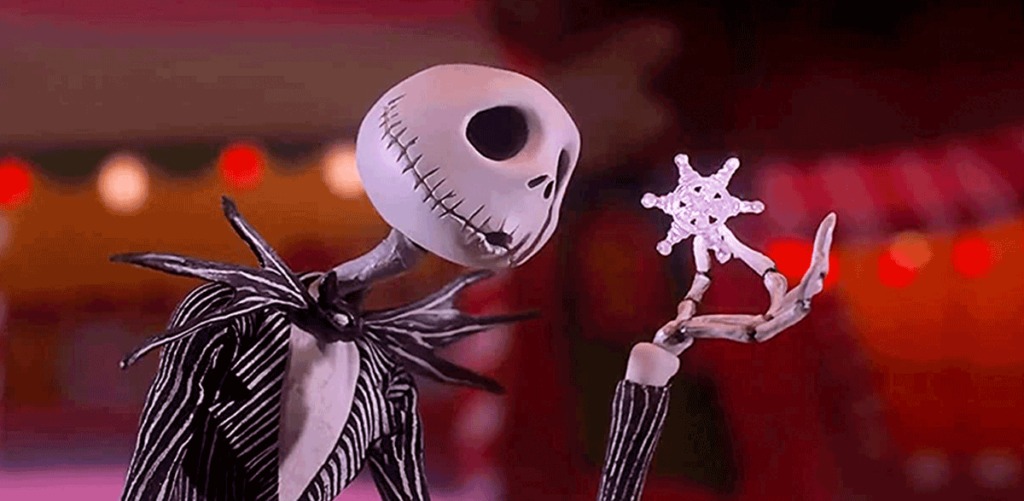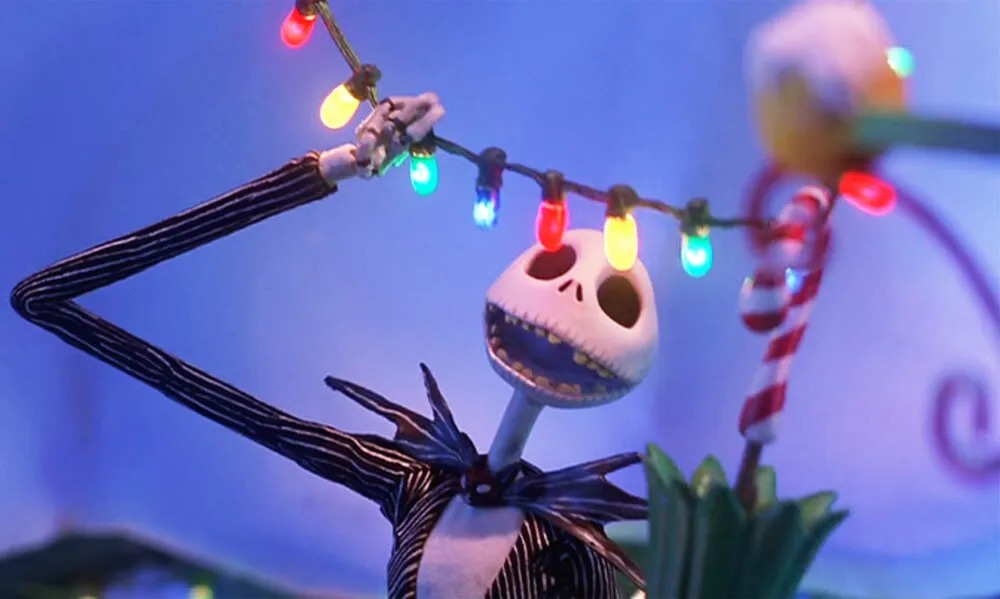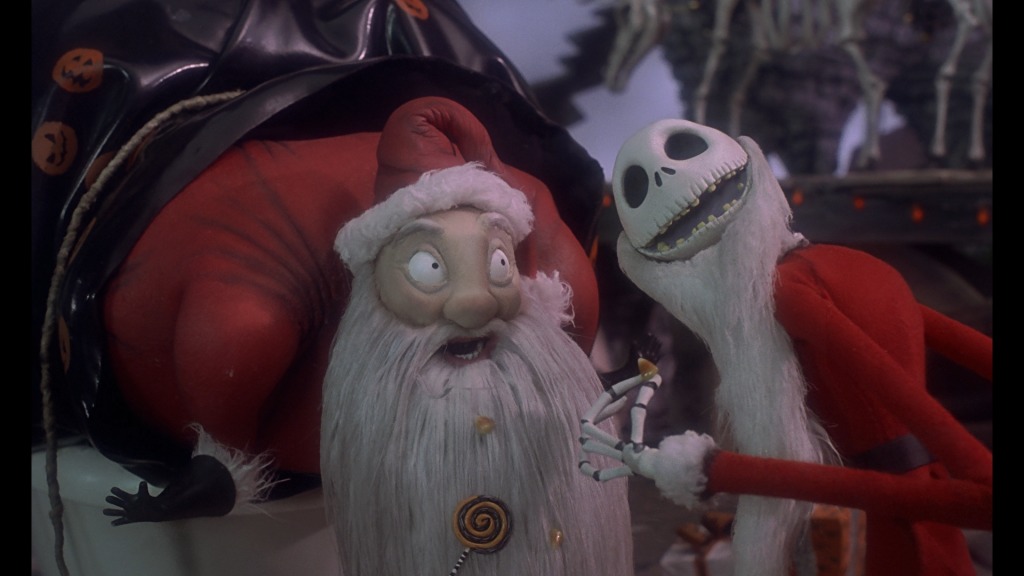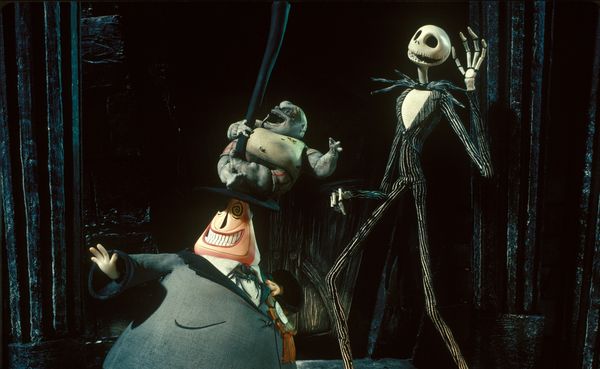The Nightmare Before Christmas (1993)

The Nightmare Before Christmas (1993), directed by Henry Selick and produced by Tim Burton, is a stop-motion animated film that has become a beloved classic for audiences of all ages. Set in a world where each holiday has its own separate realm, the film follows Jack Skellington, the “Pumpkin King” of Halloween Town, who becomes disillusioned with his routine role in the Halloween festivities. Through its creative animation, memorable characters, and unique blend of dark fantasy and holiday cheer, The Nightmare Before Christmas has earned its place as a timeless film that transcends the typical boundaries of holiday movies.
The story begins in Halloween Town, where Jack Skellington is celebrated as the mastermind behind Halloween. Although he is adored by the townspeople, Jack grows weary of the repetitive nature of his work and yearns for something more. One day, while wandering in the woods, he stumbles upon a series of doors that lead to different holiday worlds. When he enters Christmas Town, Jack is instantly captivated by the joy, wonder, and warmth of Christmas, an entirely new experience for him. Enthralled by the idea of Christmas, Jack decides to bring the holiday back to Halloween Town, but his well-meaning attempt to “take over” Christmas leads to unintended chaos.
Jack’s decision to take over Christmas marks a major turning point in the film. He becomes obsessed with the holiday and its symbols, believing that he can improve it with the same dark, eerie touch that defines Halloween. With the help of his loyal, yet somewhat clueless, followers, Jack begins to prepare for Christmas, resulting in a twisted version of the holiday. His misguided interpretation of Christmas—featuring skeletal reindeer, haunted toys, and frightening decorations—creates a series of comic and sometimes eerie moments. This conflict between Jack’s desire for something new and the inherent differences between Halloween and Christmas forms the emotional core of the story.
A central theme of The Nightmare Before Christmas is the quest for self-discovery. Jack’s dissatisfaction with his life as Pumpkin King and his longing to find a new identity are relatable themes that resonate with many viewers. Throughout the film, Jack tries to “redefine” himself by stepping into a role that doesn’t belong to him. However, he soon learns that embracing something outside of his true nature—no matter how exciting or appealing it may seem—leads to complications. Jack’s journey is one of self-awareness as he discovers that his true purpose lies not in trying to be someone else, but in embracing who he really is. This message of self-acceptance and staying true to oneself is one of the film’s most important and universal themes.

Alongside Jack’s story is that of Sally, a ragdoll-like character who secretly loves Jack and often tries to warn him against his reckless pursuit of Christmas. Sally represents the voice of reason in the film, embodying qualities of patience, wisdom, and loyalty. As Jack becomes more consumed by his plans for Christmas, Sally’s concern for him deepens, and she ultimately takes matters into her own hands to save him and restore balance between Halloween and Christmas. Her selfless actions and steadfast love for Jack make her a key character in the story, and her role as a protector highlights themes of love, sacrifice, and loyalty.

The visual style of The Nightmare Before Christmas is one of the film’s most striking features. Using stop-motion animation, the film creates a dark yet whimsical world filled with detailed, hand-crafted sets and characters. The contrast between the spooky, gothic designs of Halloween Town and the bright, colorful aesthetics of Christmas Town reflects the clash of the two holidays. The animation is fluid and imaginative, with every frame capturing the intricacies of the world and characters. Tim Burton’s distinctive style is evident throughout the film, from the eerie landscapes to the quirky, unconventional characters. The detailed animation not only brings the story to life but also adds an artistic, dreamlike quality that sets the film apart from traditional animated movies.

Finally, the music of The Nightmare Before Christmas, composed by Danny Elfman, is an integral part of the film’s success. The songs are catchy, memorable, and perfectly complement the story’s tone. From the iconic “This Is Halloween” to the melancholic “Sally’s Song” and the energetic “What’s This?”, the music enhances the emotional depth and atmosphere of the film. The songs not only move the plot forward but also capture the characters’ emotions, making the film an immersive experience. Elfman’s music, paired with Burton’s dark imagination, creates a unique combination of horror and holiday cheer, making The Nightmare Before Christmas a movie that appeals to both children and adults.

In conclusion, The Nightmare Before Christmas (1993) remains a landmark in animated filmmaking, a blend of dark fantasy, holiday spirit, and timeless themes. Its story of self-discovery, love, and the clash of two contrasting worlds, paired with unforgettable visuals and music, has made it a cherished holiday classic. The film’s ability to resonate with audiences year after year, whether during Halloween or Christmas, speaks to its universal appeal. Through Jack Skellington’s journey of growth and Sally’s unwavering love, The Nightmare Before Christmas teaches us that embracing who we are and staying true to our essence is the key to happiness. It is a film that, much like the holidays it portrays, is a celebration of both light and dark, joy and sorrow, and the beauty found in embracing both.











